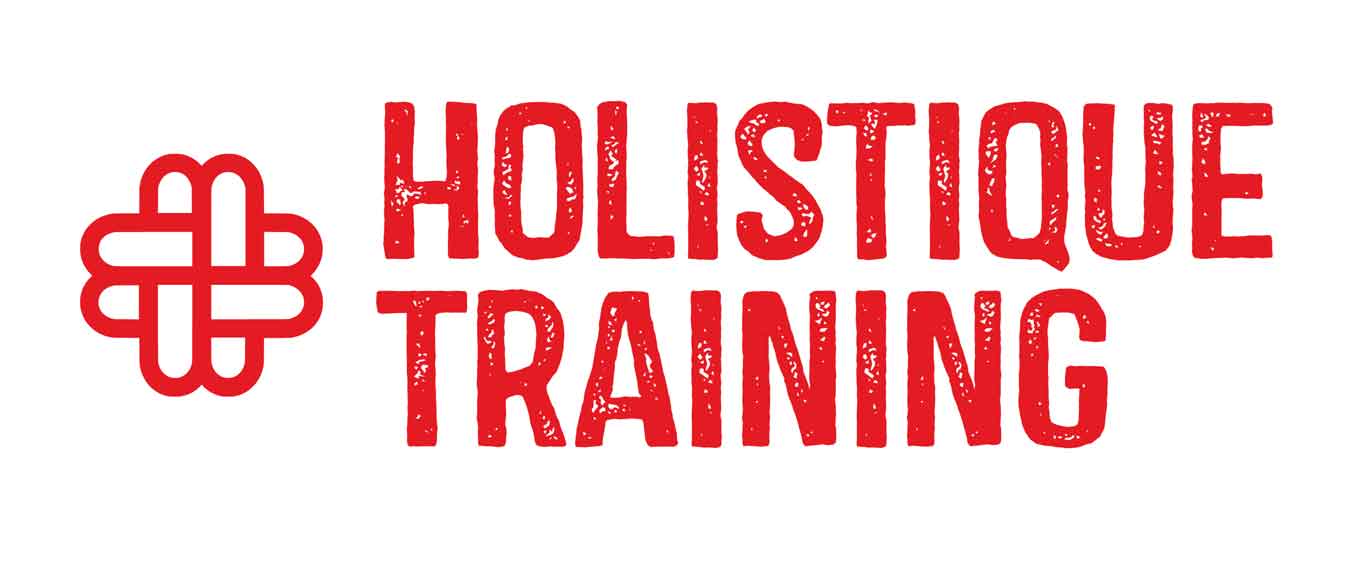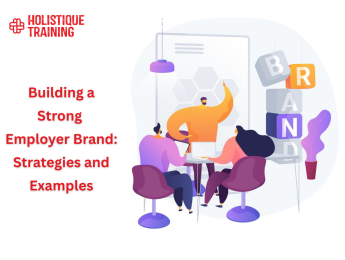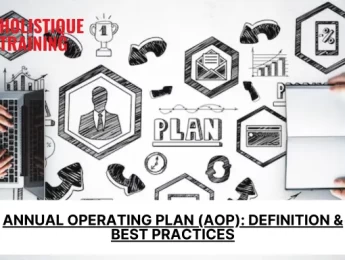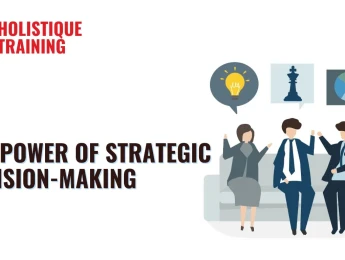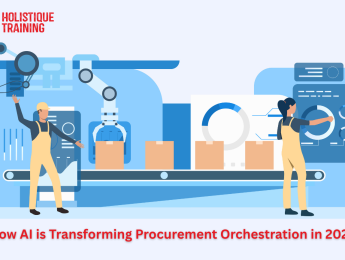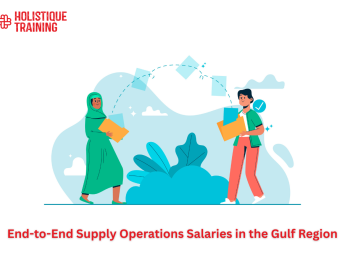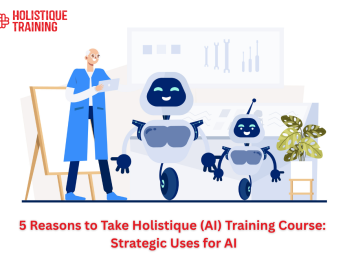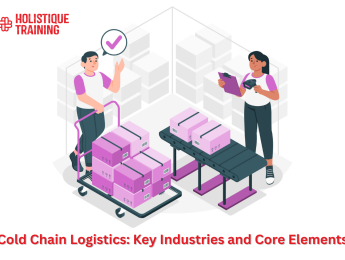- Table of Contents
- Introduction
- What is Employer Branding?
- What is EVP (Employer Value Proposition)?
- Why is Employer Branding Important in Recruitment?
- 1. Attracting Top Talent
- 2. Standing Out in a Crowded Job Market
- 3. Reducing Time-to-Hire
- 4. Lowering Recruitment Costs
- 5. Enhancing Candidate Experience
- 6. Building Trust and Credibility
- 7. Improving Employee Retention
- 8. Aligning Talent with Business Goals
- 9. Adapting to Changing Candidate Expectations
- 10. Creating a Long-Term Talent Pipeline
- Employer Branding: Then vs. Now
- Internal vs. External Employer Branding
- Internal Employer Branding:
- External Employer Branding:
- Strategies for Employer Branding
- 1. Define Your EVP (Employer Value Proposition)
- 2. Leverage Employee Stories
- 3. Invest in Social Media and Digital Platforms
- 4. Prioritize Diversity, Equity, and Inclusion (DEI)
- 5. Monitor and Respond to Feedback
- 6. Collaborate Across Departments
- How to Plan and Execute Your Employer Branding Strategy
- 1. Conduct Research
- 2. Define Clear Goals
- 3. Develop a Messaging Framework
- 4. Choose the Right Channels
- 5. Engage Employees as Brand Ambassadors
- 6. Measure and Analyze Success
- 7. Foster Cross-Department Collaboration
- How to Optimize Your Employer Branding Strategy
- 1. Regularly Audit Your Employer Brand
- 2. Update Content to Reflect Trends
- 3. Leverage Employee Feedback for Improvements
- 4. Incorporate Data-Driven Insights
- 5. Expand Your Social Media Presence
- 6. Highlight Career Growth Opportunities
- 7. Build Partnerships with Universities and Industry Groups
- 8. Create a Continuous Feedback Loop
- Employer Branding Strategy Examples
- 1. Google: Focus on Innovation and Employee Perks
- 2. HubSpot: Transparency and Employee Advocacy
- 3. Starbucks: Emphasis on Diversity and Community
- 4. Netflix: Highlighting Company Culture
- 5. Salesforce: Commitment to Social Responsibility
- Conclusion
Introduction
Employer branding has become a cornerstone of modern recruitment and talent retention strategies. In an increasingly competitive job market, organizations that invest in building a strong employer brand not only attract top talent but also foster a loyal and engaged workforce. This blog will explore the concept of employer branding in depth, breaking down its components, importance, evolution, and strategies for success. Whether you're just beginning to shape your employer branding strategy or looking to refine it, this guide will provide actionable insights to help you stand out as an employer of choice.
What is Employer Branding?
Employer branding refers to the perception of your organization as a place to work, both internally among employees and externally among job seekers and the broader public. It encompasses the values, culture, work environment, and career opportunities that define your company and make it unique. Essentially, it’s the reputation your organization holds as an employer.
A strong employer brand goes beyond superficial marketing and reflects the authentic experience of working at your company. It’s not just about what you say—it’s about what current and former employees, as well as candidates, genuinely feel about your organization. A well-crafted employer brand can inspire trust, loyalty, and enthusiasm among your workforce while attracting like-minded professionals who align with your company’s mission and values.
What is EVP (Employer Value Proposition)?
At the heart of employer branding lies the Employer Value Proposition (EVP). Your EVP is the unique set of benefits, opportunities, and experiences that your company offers to its employees in exchange for their skills, capabilities, and commitment. Think of it as the promise you make to your team—a clear articulation of why someone should choose to work for your organization over others. According to Universum, a whopping90% of the world’s leading employers recognized as the most attractive have an established EVP.
A strong EVP should encompass several key components:
- Compensation and Benefits: Competitive pay, health insurance, retirement plans, and other financial incentives.
- Career Development: Opportunities for growth, learning, and advancement.
- Work Environment: A positive, inclusive, and supportive workplace culture.
- Purpose and Impact: The sense of meaning and fulfillment employees derive from their work.
- Work-Life Balance: Flexibility, remote work options, and policies that prioritize well-being.
Your EVP serves as the foundation of your employer branding efforts. It should be authentic, compelling, and aligned with the values and expectations of your target talent pool.
Why is Employer Branding Important in Recruitment?
The recruitment landscape has undergone a seismic shift in recent years. Candidates now have more access to information about potential employers than ever before, thanks to platforms like Glassdoor, LinkedIn, and social media. This transparency means that organizations can no longer rely solely on job postings and competitive salaries to attract talent. Instead, they must actively cultivate a positive employer brand.
Here are some key reasons why employer branding is crucial in recruitment:
1. Attracting Top Talent
A powerful employer brand serves as a magnet for high-caliber professionals. When your organization is known for its positive culture, career growth opportunities, and employee satisfaction, it naturally appeals to the best talent in the market. Candidates are more likely to apply for roles at companies they admire and trust, even if they aren’t actively searching for a job. In fact, according to Glassdoor, companies with a strong employer brand can attract up to 50% more qualified candidates while lowering their cost-per-hire by up to 43%.For example, companies like Google and Microsoft receive thousands of applications daily, not just because of their industry success but because of their strong employer brands that emphasize innovation, collaboration, and employee well-being.
2. Standing Out in a Crowded Job Market
The modern job market is saturated with opportunities, and candidates are inundated with job postings, recruitment emails, and offers. A strong employer brand helps your organization stand out from the competition. When potential candidates see your company as a place where they can thrive, grow, and feel valued, they’re more likely to choose you over other employers. In essence, your employer brand becomes the differentiator that sets you apart in a sea of options.
3. Reducing Time-to-Hire
A well-established employer brand can significantly speed up the recruitment process. When candidates are already familiar with your company’s culture, values, and reputation, they are more likely to apply for open positions and accept offers quickly. This reduces the time and effort spent on sourcing, screening, and convincing candidates, ultimately streamlining the hiring process.
4. Lowering Recruitment Costs
Strong employer branding can lead to cost savings in recruitment. Companies with a positive reputation as an employer often attract more applicants organically, reducing the need for expensive advertising or recruitment agencies. Additionally, employee referrals—a cost-effective recruitment channel—are more likely to occur when your employees are proud of where they work and want to recommend your organization to others.
5. Enhancing Candidate Experience
Employer branding also plays a critical role in shaping the candidate experience. A clear and consistent employer brand sets the tone for what candidates can expect during the recruitment process. From the first interaction with a job posting to the final interview, a strong brand ensures that candidates feel respected, informed, and valued. Even those who don’t get the job leave with a positive impression of your organization, which can lead to future applications or referrals.
6. Building Trust and Credibility
In today’s digital age, candidates have access to a wealth of information about potential employers. Platforms like Glassdoor, LinkedIn, and Indeed allow job seekers to read reviews, compare salaries, and evaluate company culture. A strong employer brand builds trust and credibility by ensuring that what candidates read online aligns with the reality of working at your company. When your employees act as brand ambassadors and share their positive experiences, it reinforces your reputation and attracts like-minded individuals.
7. Improving Employee Retention
Employer branding doesn’t just attract talent—it helps retain it. Recruitment is closely tied to retention because high turnover rates can damage your reputation and make it harder to attract candidates. Employees who feel proud of their workplace and aligned with its values are more likely to stay, reducing the need for constant rehiring. A strong employer brand fosters loyalty and engagement, creating a stable and motivated workforce.
8. Aligning Talent with Business Goals
Recruitment isn’t just about filling positions—it’s about finding the right people who can help your organization achieve its long-term goals. A strong employer brand attracts candidates who share your company’s mission, values, and vision. This alignment ensures that new hires not only fit into the company culture but also contribute meaningfully to its success. For example, a company focused on sustainability will naturally attract candidates passionate about environmental issues, creating a workforce that’s motivated to drive the company’s goals forward.
9. Adapting to Changing Candidate Expectations
Today’s workforce has evolved, and so have candidate expectations. Millennials and Gen Z, who now dominate the job market, prioritize factors like purpose-driven work, diversity and inclusion, mental health support, and work-life balance. Employer branding allows organizations to showcase how they meet these expectations, making them more appealing to younger generations of workers. Without a strong employer brand, companies risk being overlooked by this critical talent pool.
10. Creating a Long-Term Talent Pipeline
Employer branding isn’t just about immediate recruitment—it’s about building a pipeline of future talent. Even if candidates aren’t ready to apply for a position now, a positive employer brand ensures they’ll keep your organization in mind for future opportunities. By consistently reinforcing your reputation as a great place to work, you create a steady stream of qualified candidates who are eager to join your team when the time is right.
In summary, employer branding is a powerful tool that shapes how your organization is perceived by job seekers and employees alike. It impacts every stage of the recruitment process, from attracting the right candidates to retaining top talent. Organizations that invest in building and maintaining a strong employer brand position themselves as employers of choice, gaining a competitive edge in the war for talent. By prioritizing employer branding, you’re not just filling vacancies—you’re building a workforce that drives your company’s success.
Employer Branding: Then vs. Now
Employer branding has evolved significantly over the years. In the past, it was often seen as a secondary concern, with companies relying on word-of-mouth or traditional advertising to build their reputation. However, the rise of digital platforms and changing workforce dynamics have transformed how organizations approach employer branding.
- Then: Employer branding was largely reactive, focused on damage control and addressing negative perceptions after they arose.
- Now: It’s proactive, with companies actively shaping their narrative and engaging with current and potential employees across various channels.
- Then: Communication was one-sided, with employers controlling the message.
- Now: It’s a two-way dialogue, with employees and candidates sharing their experiences and opinions publicly.
- Then: Employer branding was often disconnected from corporate branding.
- Now: There’s a seamless integration, with organizations recognizing that their reputation as an employer impacts their overall brand.
Aspect | Employer Branding: Then | Employer Branding: Now |
Approach | Reactive; focused on addressing issues as they arise | Proactive; actively shaping and maintaining the brand |
Communication | One-sided; employers controlled the narrative | Two-way dialogue; employees and candidates contribute openly |
Transparency | Limited; information about the company was tightly managed | High; candidates have access to reviews, ratings, and insights |
Integration with Branding | Disconnected from corporate branding | Seamlessly integrated with overall brand strategy |
Focus | Primarily on compensation and job security | Broader focus on culture, values, purpose, and flexibility |
This shift underscores the importance of staying ahead of trends and adapting your employer branding strategy to meet the expectations of a modern workforce.
Internal vs. External Employer Branding
Employer branding operates on two levels: internal and external. Both are equally important and must work in harmony to create a cohesive and authentic brand.
Internal Employer Branding:
- Focuses on current employees.
- Involves creating a positive work environment, fostering engagement, and ensuring employees feel valued.
- Examples include recognition programs, professional development opportunities, and transparent communication.
External Employer Branding:
- Targets job seekers and the broader public.
- Aims to showcase your organization as a desirable place to work.
- Examples include social media campaigns, career fairs, and partnerships with universities.
Aspect | Internal Employer Branding | External Employer Branding |
Audience | Current employees | Job seekers and the broader public |
Focus | Employee engagement, satisfaction, and retention | Attracting talent and building a positive public perception |
Examples | Recognition programs, career development, and transparent communication | Social media campaigns, career fairs, and employer review sites |
Objective | Foster loyalty, productivity, and advocacy among employees | Showcase the organization as a desirable place to work |
Impact | Builds a motivated and engaged workforce | Draws in top talent and enhances the company’s reputation |
While the two approaches have distinct audiences, they are interconnected. Happy employees are your best brand ambassadors, while a strong external employer brand can attract talent that aligns with your company culture.
Strategies for Employer Branding
Crafting a strong employer brand requires a thoughtful and strategic approach. It’s not just about creating a catchy tagline or running a one-time campaign—it’s about building a consistent, authentic narrative that resonates with both current and prospective employees. Below are some key strategies to help you establish and maintain a compelling employer brand:
1. Define Your EVP (Employer Value Proposition)
Your Employer Value Proposition (EVP) is the cornerstone of your employer branding strategy. It encapsulates what makes your organization unique and why employees choose to work for you. Take the time to identify your company’s core values, culture, and the benefits you offer employees. Ensure that your EVP aligns with the expectations of your target talent pool and reflects the authentic experience of working at your company. A clearly defined EVP will serve as the foundation for all your employer branding efforts.
2. Leverage Employee Stories
Employees are your best brand ambassadors, and their stories carry a level of authenticity that no marketing campaign can replicate. Share real-life testimonials, success stories, and behind-the-scenes glimpses of your workplace culture through videos, blogs, or social media. Highlight diverse perspectives to show the inclusivity and breadth of your company’s values. By showcasing the voices of your employees, you humanize your brand and build trust with potential candidates.
3. Invest in Social Media and Digital Platforms
Social media is one of the most powerful tools for employer branding. Platforms like LinkedIn, Instagram, and even TikTok allow you to showcase your workplace culture, highlight employee achievements, and engage with potential candidates. Create content that reflects your organization’s personality—whether it’s a day-in-the-life video, team celebrations, or thought leadership posts from your leadership team. Consistency is key, so ensure your messaging and visuals align with your overall employer brand.
4. Prioritize Diversity, Equity, and Inclusion (DEI)
A commitment to diversity, equity, and inclusion (DEI) is not just a trend—it’s a necessity for building a modern and inclusive workplace. Candidates are increasingly looking for employers that prioritize DEI initiatives and create environments where everyone feels valued and respected. Showcase your efforts by highlighting employee resource groups, inclusive hiring practices, and leadership accountability for DEI goals. A strong focus on DEI not only attracts diverse talent but also strengthens your reputation as an employer that values fairness and equality.
5. Monitor and Respond to Feedback
Employer branding is an ongoing process, and feedback is a critical part of refining your strategy. Regularly monitor your company’s reviews on platforms like Glassdoor and Indeed, and pay attention to what employees and candidates are saying about their experiences. Respond to reviews—both positive and negative—in a professional and empathetic manner to show that you value feedback and are committed to improvement. By actively managing your online reputation, you can address concerns and build trust with your audience.
6. Collaborate Across Departments
Employer branding is not the sole responsibility of HR—it requires collaboration across departments, especially marketing and leadership. Work with your marketing team to ensure your employer branding aligns with your corporate branding and messaging. Engage leadership to champion your employer brand and set the tone for company culture. When all departments work together, you create a cohesive and authentic employer brand that resonates both internally and externally.
These strategies, when implemented thoughtfully, can help you build a strong employer brand that attracts top talent, retains employees, and positions your organization as an employer of choice.
How to Plan and Execute Your Employer Branding Strategy
Building an effective employer branding strategy requires careful planning, collaboration, and consistent execution. It’s not just about launching a campaign—it’s about creating a long-term, sustainable approach that aligns with your company’s goals and values. According to Harvard Business Review, as many as 75% of organizations face challenges in successfully implementing strategies, which is why you should prioritize planning for efficient execution. Below are the key steps to plan and execute your employer branding strategy successfully:
1. Conduct Research
Start by understanding your current employer brand perception. Gather insights from multiple sources, including employee surveys, exit interviews, candidate feedback, and reviews on platforms like Glassdoor or Indeed. Benchmark your organization against competitors to identify strengths and areas for improvement. This research will provide a clear picture of how your company is perceived and help you shape a strategy that addresses gaps while leveraging your unique strengths.
2. Define Clear Goals
Set specific, measurable goals for your employer branding efforts. These could include attracting a certain talent pool, improving employee engagement scores, reducing turnover rates, or increasing applications for open roles. Having well-defined objectives ensures that your strategy is focused and aligned with your broader business goals. Clear goals also make it easier to track progress and demonstrate the impact of your efforts to leadership.
3. Develop a Messaging Framework
Craft a consistent messaging framework that aligns with your Employer Value Proposition (EVP). This framework should highlight your company’s culture, values, and what makes it a great place to work. Tailor your messaging to resonate with different audiences, such as recent graduates, experienced professionals, or remote workers, while ensuring it remains authentic and cohesive. This framework will guide your communication across all channels, from job postings to social media.
4. Choose the Right Channels
Identify the platforms and channels that will best reach your target audience. For example, LinkedIn is ideal for professional networking, while Instagram or TikTok can showcase your company culture in a more creative and engaging way. Don’t forget about your careers page—it should be visually appealing, easy to navigate, and filled with compelling content that reflects your employer brand. By selecting the right mix of channels, you can maximize your reach and impact.
5. Engage Employees as Brand Ambassadors
Your employees are the heart of your employer brand, and their voices carry the most authenticity. Encourage them to share their experiences on social media, participate in recruitment events, and refer potential candidates. Provide tools and resources to help them become effective brand ambassadors, such as pre-approved content or incentives for referrals. When employees actively promote your organization, it strengthens your brand’s credibility and reach.
6. Measure and Analyze Success
Track the performance of your employer branding efforts using key metrics. These could include application rates, employee engagement scores, social media engagement, or retention rates. Use analytics tools to gather data and identify trends, such as which channels are driving the most traffic to your careers page or which campaigns resonate most with your audience. Regularly review this data to refine your strategy and ensure it continues to deliver results.
7. Foster Cross-Department Collaboration
Employer branding is a team effort that requires input from HR, marketing, leadership, and even employees. Work closely with your marketing team to ensure your employer branding aligns with your corporate branding. Involve leadership to champion the company’s mission and values, and encourage employees to share their authentic experiences. This collaboration ensures consistency and authenticity across all touchpoints.
By following these steps, you can create a well-rounded employer branding strategy that not only attracts top talent but also fosters engagement and loyalty among your current employees. The key is to remain flexible, listen to feedback, and continuously evolve your approach to meet the changing needs of your workforce and the job market.
How to Optimize Your Employer Branding Strategy
Once your employer branding strategy is in place, the next step is to refine and optimize it for long-term success. Optimization involves continuously evaluating your efforts, identifying areas for improvement, and adapting to changing trends and workforce expectations. Below are actionable steps to help you enhance your employer branding strategy:
1. Regularly Audit Your Employer Brand
Conduct periodic audits of your employer branding efforts to ensure they remain aligned with your company’s goals and values. Review your messaging, content, and channels to identify areas that may need updating or improvement. Pay special attention to employee feedback, candidate reviews, and social media engagement to uncover gaps or inconsistencies. A thorough audit allows you to stay relevant and ensure your branding reflects the current reality of your workplace.
2. Update Content to Reflect Trends
Employer branding content should evolve with changing trends and workforce expectations. Regularly update your careers page, job postings, and social media content to highlight new initiatives, benefits, or employee success stories. For instance, if remote work or mental health support has become a priority, ensure these aspects are prominently featured. Staying current with trends helps you attract candidates who align with your updated values and offerings.
3. Leverage Employee Feedback for Improvements
Your employees are a valuable source of insights for optimizing your employer branding. Conduct regular surveys, focus groups, or one-on-one interviews to gather their perspectives on what’s working and what could be improved. Use their feedback to fine-tune your messaging, workplace policies, or engagement initiatives. Employees who feel heard and valued are more likely to become advocates for your brand, further enhancing its credibility.
4. Incorporate Data-Driven Insights
Use analytics tools to track the performance of your employer branding efforts and identify what’s working. Monitor metrics such as application rates, time-to-hire, social media engagement, and employee retention. Analyze this data to uncover trends and patterns that can guide your strategy. For example, if a specific social media campaign drives high engagement, consider replicating its format or tone in future efforts. Data-driven decisions ensure your strategy remains effective and efficient.
5. Expand Your Social Media Presence
If your employer branding efforts are limited to a few platforms, consider expanding to others where your target audience may be active. For example, younger candidates might be more engaged on TikTok, while professionals may prefer LinkedIn. Tailor your content to fit the tone and style of each platform, ensuring your messaging remains consistent but adaptable. A broader social media presence increases your visibility and helps you reach a wider talent pool.
6. Highlight Career Growth Opportunities
Candidates are increasingly looking for employers who prioritize career development. Optimize your employer branding by showcasing the growth opportunities your organization offers, such as training programs, mentorship, or internal promotions. Share success stories of employees who have advanced within the company to demonstrate your commitment to professional development. This focus on growth can make your organization more appealing to ambitious talent.
7. Build Partnerships with Universities and Industry Groups
Strengthen your employer brand by establishing partnerships with universities, colleges, and professional organizations. Participate in career fairs, sponsor events, or offer internships to build awareness of your company among students and professionals. These partnerships not only enhance your visibility but also position your organization as a thought leader and an employer of choice within your industry.
8. Create a Continuous Feedback Loop
Employer branding is not a one-and-done effort—it requires ongoing refinement. Establish a feedback loop where you regularly solicit input from employees, candidates, and even external stakeholders. Use this feedback to make incremental improvements to your strategy, ensuring it evolves with the needs of your workforce and the job market. A continuous improvement approach keeps your employer brand fresh, relevant, and impactful.
By implementing these optimization steps, you can ensure your employer branding strategy remains dynamic, effective, and aligned with your organization’s goals. Regular evaluation and adaptation will help you stay ahead in the competitive talent market and foster a strong, authentic employer brand.
Employer Branding Strategy Examples
Many organizations have successfully implemented employer branding strategies that resonate with both current employees and potential candidates. These examples demonstrate how companies can creatively and effectively showcase their culture, values, and employee experiences. Below are some notable employer branding strategies from well-known organizations:
1. Google: Focus on Innovation and Employee Perks
Google is renowned for its innovative culture and exceptional employee benefits. The company’s employer branding emphasizes its commitment to fostering creativity, collaboration, and personal growth. Through videos, blogs, and social media, Google showcases its vibrant work environment, unique perks (like free meals and wellness programs), and employees’ stories of innovation. This approach not only attracts top talent but also reinforces Google’s reputation as a forward-thinking and employee-centric organization.
2. HubSpot: Transparency and Employee Advocacy
HubSpot has built a strong employer brand by prioritizing transparency and empowering employees to share their experiences. The company openly shares its "Culture Code" online, which outlines its values, mission, and approach to work. Employees are encouraged to act as brand ambassadors by sharing their stories on social media and participating in recruitment initiatives. This focus on authenticity and openness has helped HubSpot attract candidates who align with its culture and values.
3. Starbucks: Emphasis on Diversity and Community
Starbucks integrates its commitment to diversity, equity, and inclusion (DEI) into its employer branding. The company highlights its diverse workforce, inclusive hiring practices, and employee resource groups (ERGs). Starbucks also emphasizes its community-focused initiatives, such as sustainability efforts and volunteer opportunities for employees. By showcasing its dedication to DEI and social responsibility, Starbucks appeals to candidates who value purpose-driven work.
4. Netflix: Highlighting Company Culture
Netflix’s employer branding centers around its unique company culture, which is outlined in its famous "Netflix Culture Deck." The company emphasizes values such as freedom, responsibility, and innovation, attracting candidates who thrive in a high-performance environment. Netflix also uses social media and its careers page to share employee testimonials and behind-the-scenes content, providing an authentic glimpse into life at the company.
5. Salesforce: Commitment to Social Responsibility
Salesforce has built a strong employer brand by emphasizing its commitment to social responsibility and employee well-being. The company highlights its 1-1-1 philanthropic model, which dedicates resources to giving back to communities. Salesforce also showcases initiatives like mental health support, flexible work options, and career development programs. This focus on purpose and employee care has made Salesforce a top choice for candidates seeking meaningful work in a supportive environment.
These examples illustrate how companies can tailor their employer branding strategies to reflect their unique values and strengths. By focusing on authenticity, transparency, and employee experiences, these organizations have successfully positioned themselves as employers of choice in competitive markets.
Conclusion
Employer branding is far more than just a trendy concept—it’s a cornerstone of any successful talent strategy. It plays a pivotal role in attracting, engaging, and retaining top talent by shaping how current and potential employees perceive your organization. By mastering the principles of employer branding, crafting a compelling Employer Value Proposition (EVP), and executing thoughtful, strategic initiatives, businesses can cultivate a reputation that resonates deeply with both employees and candidates.
Building a strong employer brand isn’t a one-time task—it’s an ongoing journey that demands commitment, creativity, and collaboration across teams. It requires organizations to authentically communicate their values, listen to employee feedback, and adapt to evolving workforce expectations. The payoff? A motivated and engaged workforce, reduced turnover, and a significant competitive advantage in today’s crowded talent market.
If you’re ready to elevate your employer branding efforts or refine your recruitment strategies, our course, Strategic Recruitment and Interviewing Techniques, is the perfect next step. This comprehensive program is designed to empower HR professionals, recruiters, and hiring managers with the tools and insights needed to attract and hire the right talent effectively. You’ll learn how to align your recruitment practices with your employer branding goals, master interviewing techniques, and create a hiring process that reflects your company’s unique culture and values.
Don’t leave your employer brand to chance—take control of your talent strategy and position your organization as an employer of choice. Enroll in Strategic Recruitment and Interviewing Techniques today and start building the foundation for long-term success in the talent marketplace.
